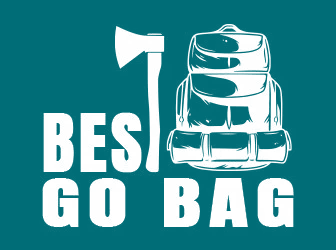During emergencies such as earthquakes, hurricanes, or civil unrest, traditional communication infrastructure like mobile networks and internet services may become unreliable or completely unavailable. In such situations, having alternative bug out communication methods becomes crucial. These methods can range from simple and low-tech to advanced and high-tech solutions, providing options for everyone, regardless of their technical expertise.
Source of bug out communication
Two-Way Radios
Two-way radios, also known as walkie-talkies, are compact, portable communication devices that can transmit and receive messages over short distances. They operate on specific radio frequencies and don’t rely on cellular networks, making them an excellent choice for bug out communication. Make sure to choose radios with a long-range capacity and consider getting a set for your family or group for easy coordination.
Ham Radio (Amateur Radio)
For more extended-range communication, especially during severe emergencies, ham radio can be a lifesaver. Licensed ham radio operators can communicate over long distances using designated radio frequencies and repeaters. Ham radios provide a reliable means of communication even when other forms of communication are down. However, obtaining a ham radio license and some training is essential before using this method.
Satellite Communication Devices
Satellite communication devices have become increasingly accessible in recent years. These devices use satellites to establish a connection, allowing communication in remote areas where traditional networks are unavailable. Some devices can pair with smartphones, enabling text messaging and location sharing via satellite. Though these devices may be expensive, they can be invaluable in critical situations.
Signal Whistles and Mirrors
In situations where modern technology fails, simple tools like whistles and mirrors can save lives. Whistles produce loud, piercing sounds that can be heard from a distance, attracting attention to your location. Similarly, mirrors can be used to reflect sunlight and catch the attention of rescue teams or passing aircraft. These lightweight and inexpensive tools should be part of every bug out bag.
Mesh Networks
Mesh networks are peer-to-peer networks created using mobile devices or computers. They allow communication between devices within the network without relying on central infrastructure. During emergencies, individuals can use mesh network apps to connect with others nearby, creating an ad-hoc communication system. This technology is continually evolving, but it holds promise for improving emergency communication in the future.
Hand-Crank Emergency Radios
Hand-crank emergency radios are versatile devices that can receive AM/FM frequencies and NOAA weather alerts. What sets them apart is their ability to be powered through a hand-crank mechanism, solar panels, or batteries. These radios provide vital information during disasters and serve as a reliable communication tool when other power sources are unavailable.
Offline Messaging Apps
Several messaging apps offer offline functionality, allowing users to send and receive messages without an internet connection. These apps create a local network using Bluetooth or Wi-Fi Direct, enabling communication with nearby users. This feature is particularly useful when cellular networks are congested or unavailable.
Portable Wi-Fi Hotspots
Portable Wi-Fi hotspots, also known as Mi-Fi devices, can provide internet connectivity to multiple devices in the vicinity. While they typically rely on cellular networks, they can be helpful in areas with limited coverage. Consider having one as part of your bug out communication plan, but keep in mind that during widespread disasters, cellular networks may become overloaded or unavailable.
Emergency Messaging Services
Several organizations and government agencies offer emergency messaging services that deliver critical information during disasters. These services send alerts, updates, and safety instructions directly to your mobile device via SMS. Make sure to register for these services in advance to receive timely and accurate information during emergencies.
Social Media and Online Forums
During disasters, social media platforms and online forums can serve as valuable communication channels. People often share real-time updates, request assistance, and provide helpful information through these platforms. Stay active on local community forums and disaster-specific groups to stay informed and offer support to others in need.
Morse Code and Semaphore
Learning basic Morse code and semaphore signaling can be useful in situations where verbal communication is not possible. These age-old methods use visual or auditory signals to convey messages, making them effective even in low-tech scenarios. Morse code can be transmitted using flashlights, sound, or visual cues, while semaphore relies on flags or arm positions to send messages.
Radio Scanners
Radio scanners allow you to monitor various radio frequencies, including emergency services, law enforcement, and weather channels. By staying informed about the situation in your area, you can make more informed decisions and respond appropriately during emergencies.
Prearranged Meeting Points
As part of your bug out communication plan, establish prearranged meeting points with your family or group. In case you get separated during an emergency, these meeting points can serve as a rendezvous location where everyone knows to gather for regrouping and coordination.
Prepaid Phone with Multiple Network Compatibility
Consider having a prepaid phone with multiple network compatibility. This way, you can switch to different carriers if one network is down or experiencing connectivity issues. Having a spare phone with a charged battery in your bug out bag can be a valuable backup communication tool.
Communication Etiquette
During emergencies, communication resources may be limited, so it’s essential to practice communication etiquette. Keep messages concise, avoid unnecessary chatter, and prioritize critical information. This approach ensures that everyone has a chance to use the available communication channels effectively.


